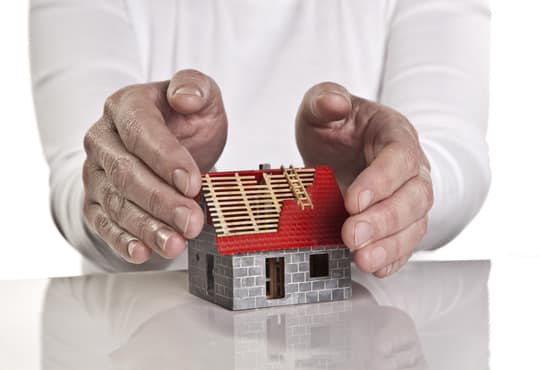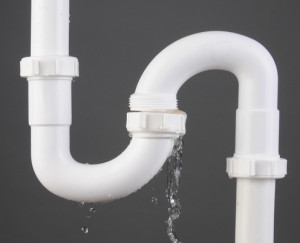
The survey found that if your damage is greater, this increases the possibility of disagreeing with your insurer about the value of the loss. 6% of those who claimed less than $20,000 said that they disagreed with the insurance company about the claim amount. But when the damage was worth $20,000 and over, 10% of the respondents differed with the insurance company’s assessment of their claim. In addition, 3% of these individuals said the insurance company delayed when settling their claims. This was three times the rate for respondents whose losses were valued under $20,000.
Insurance companies shift the risk to you
The usual deductible for standard homeowner’s insurance policies varies between $500 and $1,500. But for claims arising due to harsh weather conditions like hail, wind storms and hurricanes, you might be required to pay as much as 5% of the insured value of your home to cater for damage costs. This amount can rise to 10% if you live in Florida. Therefore, if your home’s insured value is $235,000-the median price as at November 2016-and there is a 5% hurricane deductible in your policy, you will be required to pay a sum of $11,750 from your pocket for a claim that is storm-related.
A lot of insurance companies have pulled out of areas that are susceptible to hurricanes and they are avoiding paying other types of claims using contract language. For instance, although you might have hail coverage, your roof can be excluded if it is over 10 or 15 years old. Other times you may buy a typical homeowner policy that provides coverage against an overflowing bathtub or frozen/burst water pipe, but you are still in trouble if your sump pump cannot deal with a backed-up sewer or a huge downpour. To avoid such problems, you will have to fork out from $40 to $50 annually for an endorsement that covers that scenario.
Regrettably, many people treat shopping for insurance as a one-time thing which they quickly forget about. To start with, home-loss claims are rare, and 50% of them are for $8,000 and below. As a result, consumers do not get an opportunity to improve their skill when shopping for the service and they seldom get a chance to evaluate its performance before they buy. This is precisely why we use the claim-filing experience of our subscribers as the basis for our ratings.
Having outmoded assumptions about your insurance coverage can be quite costly. Here are a few tips that will assist you to find the best and most cost-effective coverage for your home:
Find the right insurance coverage

If you are dissatisfied, challenge the claim amount
Do not hesitate to file a small claim. There was no price increase for 57% of our subscribers when the value of their claim was below $5,000. For those clients who saw an increase, on average the amounts involved did not exceed $150 annually.
For the most part, the respondents in our survey agreed with the insurer, regardless of the size of the claim. However, customers disagreed with their insurers regarding the damage amounts in 6% of the cases. Our survey found that disagreements were more frequent after the occurrence of massive hurricanes.
In such circumstances, it might be beneficial to negotiate with your insurance company. Those who were dissatisfied and contested a claim were paid $6,000 more than the ones who did not. In case the adjuster states that your insurance policy does not cover a particular damage, request them to show you the specified contract language.
If you are disputing the damage amount, ask for a discussion with the insurer and adjuster so you can read the estimate word-for-word. If you are still not satisfied, request an independent contractor to give you a second opinion. It is important for you to be patient and tenacious and to put in a lot of effort to get a few estimates.

People who engaged a public adjuster got higher settlements (between 19% and 747% higher) on claims related to hurricanes than those who did not. For claims that did not involve disasters, the settlements were higher by 547%. However, closing such cases take longer.
In case you have been misadvised by insurance sales personnel regarding the wording in your policy, talk to a lawyer who is an expert in insurance law. While lawsuits are not common, courts have regularly sided with policyholders when it comes to such ambiguities. You can also opt to go to arbitration.
Search for a more favorable deal
While home insurance companies do not use price as a basis for competition as frequently as auto insurance companies, you may still save up to $1,000 annually in premiums if you shop around.
Inhabitants of Florida, California and other states where the insurance departments publicize rate comparisons for normalized coverage can pinpoint the lowest-cost insurers and then get in touch with them for tailor-made quotes. In case your state does not provide such assistance, talk to an independent insurance agent who deals with multiple insurers.
As you shop around for a more affordable insurance company, consider purchasing your auto and homeowners insurance from the same carrier and you can realize savings of up to 30%. And bear in mind that most of the insurance companies use insurance scores that are credit-based when determining premiums and qualification for coverage. By and large, having a good credit score means you will pay a lower premium.
Avoid Underinsuring

Avoid making the mistake of presuming that the coverage limits for your insurance policy will readjust automatically to match the falling and rising market value of your house. What you need to consider is the replacement value (the cost of materials and labor needed to rebuild). The replacement value can be considerably higher than the price your home will fetch on the market.
Request your insurance company to give you a personalized estimate of your house’s replacement cost. The figure should take into consideration its age, construction details, distinct features, and cost of adhering to new building regulations. You need to reevaluate your insurance coverage needs after every couple of years.
Even where your level of coverage is appropriate, a normal homeowner’s insurance policy is still inadequate. If you wish to get protection against the sharp upsurge in labor and material costs that usually follow a natural calamity, you will need to purchase an extended replacement cost coverage rider which normally pays an extra 30% of your policy’s limit.
There will also be an additional payment for a law or ordinance endorsement rider that pays the extra home rebuilding costs in conformity with the building codes in your locality. A standard policy does not include coverage for a sewer backup, but you can pay more for it. To avoid incurring out of pocket costs for damage, you require additional coverage for earthquakes and flooding. Furthermore, you might need separate coverage for wind, hail, and hurricanes if you reside in a high-risk area.
Insurance coverage for your clothing, electronics, furniture, and other personal possessions is standard. However, if you own expensive jewelry, silverware, artwork or furs, the coverage for them is limited. You require buying a floater or special endorsement so that they are covered for their full value.
Liability protection for the damage that you, your pets, or your children may cause to other people is also standard. The guests that may be injured in your home are also covered. Whereas coverage normally starts low (at $100,000), it is advisable to raise it to $300,000 and over. As the assets you own increase, it is recommended that you purchase an excess liability or umbrella policy with coverage of over $1 million.
As might be expected, all these add-ons raise your total premium. However, you can compensate for a portion of the cost by increasing the deductible on your policy to $500 or even $1,000-and this lowers your premium. Ensure that you have adequate savings to cater to the deductible if you run into financial difficulties-and that includes increased deductibles for hurricanes, wind, and hail.
TOP HOMEOWNERS INSURANCE CARRIERS
Minimize your risks

Begin by doing what insurance expressly offers discounts for. Installing burglar alarms, dead-bolt locks and smoke detectors can result in a 5% discount. A state-of-the-art sprinkler system that is connected to first responders can get you a discount of between 15% & 20%.
Using fire and impact-resistant roofing materials designed using rubber, cement, metal, and asphalt can get you additional discounts because they can withstand debris, hail, and embers-which are the root cause of damages due to wildfires. Fire-resistant siding offers extra protection.
In zones that are susceptible to hurricanes, storm shutter for windows and doors, code-standard roofing that can tolerate 130 miles per hour winds and hurricane-resistant siding will assist your home to weather a storm. Fortified houses have the capacity to withstand category four hurricanes.
In 2011 lightning, debris removal, and fire are responsible for the highest claims among all insured risks an average of $27,700 per claim. The major cause of house fires is cooking equipment; therefore, you must avoid leaving a stove untended. In addition, ensure that there is a fire extinguisher in your kitchen.
If the area you reside in is earthquake-prone, the building frame of your home must be correctly anchored to its foundation. For additional information on how you can minimize risks from freezing weather, wildfires, earthquakes, lightning and so on, visit disastersafety.org
Insurance companies recommend a simple solution to avert a minor disaster that can result in damage worth thousands of dollars if there is nobody at home: instead of continuing to use the regular rubber hoses in your washing machine, replace them with reinforced stainless-steel washer hoses that cost only twenty dollars each.
Insurance 101 – Homeowners Coverage





